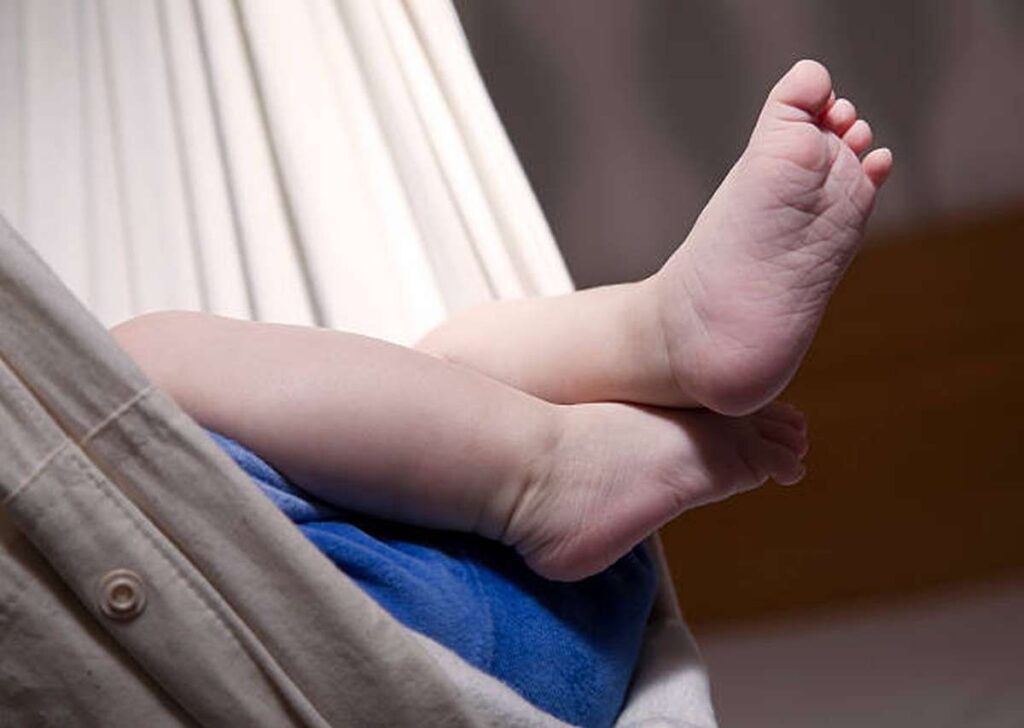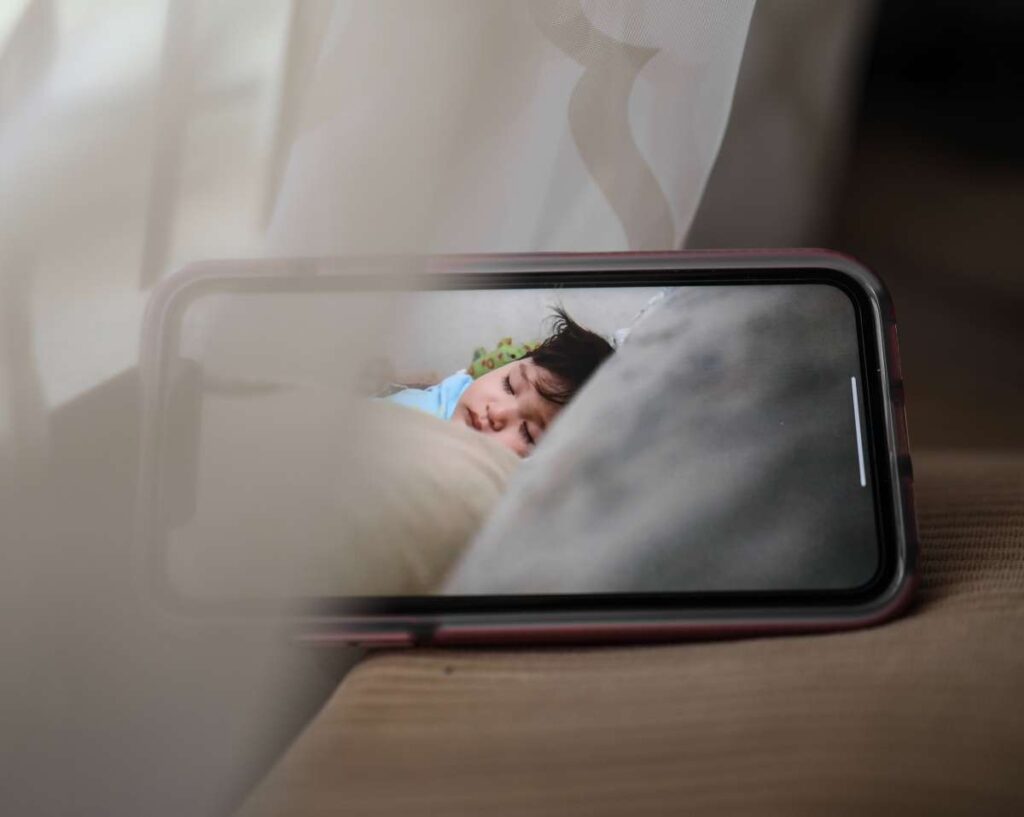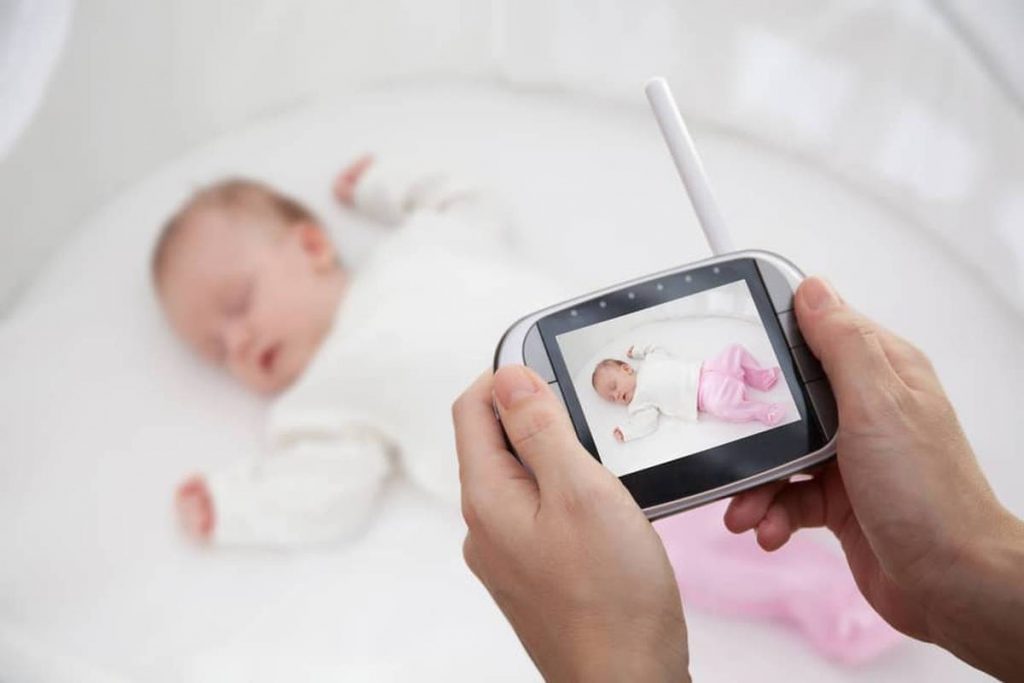The new parent's concerns are comparable, especially in light of some contemporary items. There may be too many options to choose from while browsing the aisles of a large baby store or the sites on the Internet.
A baby sleep hammock is one example of a more modern product in this category. These hammocks, which are often made from mesh, are meant to be fastened to a crib and used to suspend the baby over the mattress.
The people who came up with the idea of sleep hammocks said that babies can easily suffocate or get their limbs caught in the bars of a conventional crib. But sleeping in a hammock comes with its own set of dangers.
The Consumer Product Safety Commission has not endorsed the use of infant sleep hammocks since none have been subjected to rigors, peer-reviewed testing. Contrary to popular belief, there is no proof that they pose any more safety risks than a standard, firm crib mattress.
For all naps and overnight sleep, the AAP suggests a flat, firm mattress for infants. A baby should not sleep in a hammock because, like adult-sized hammocks, they are not flat and sturdy, which can put the baby in dangerous positions while sleeping.
Photos of babies napping in the hammocks show them with their "chin to chest," a position that has been linked to asphyxia due to breathing difficulties.
In addition, because the hammock is dangling over the crib, there is a risk that the baby will roll out of it and land on the hard mattress or perhaps fall out of the crib, all of which could cause significant injury.
Above, we see that the AAP has issued recommendations for safe infant sleep.
Abcs Of Safe Sleep
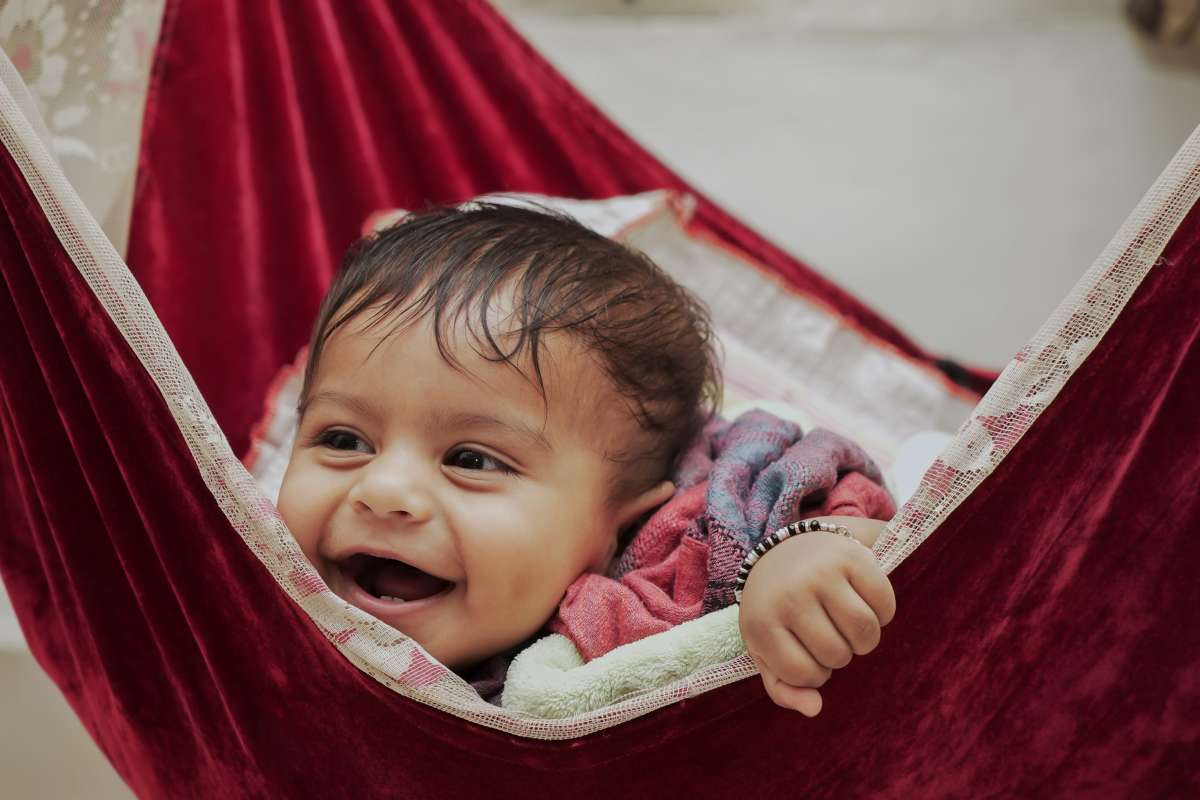
These guidelines, summarised as the "ABCs of Safe Sleep," might help families determine which of the many current infant sleeping arrangements is the safest:
A Stands For Alone.
This necessitates that a newborn always sleep in a crib by himself or herself (naps and nighttime). A crib, bassinet, or portable crib could be used here.
There is some evidence that having a baby in the same room as you can reduce the likelihood of SIDS (Sudden Infant Death Syndrome) by as much as 50%. However, a recent AAP study revealed that co-sleeping with parents is associated with an increased risk of death for infants.
B Stands For Back.
The American Academy of Pediatrics (AAP) has advocated for back sleeping for infants since 1992.
Babies are much less able to suffocate on other items or their gas while they are on their backs, reducing the incidence of sudden infant death syndrome and other sleep-related deaths.
C Stands For Crib.
Babies should always be tucked into their own cribs or a portable crib or bassinet that has been approved for safety. The mattress in the crib should be firm, and a fitted sheet should be used to prevent asphyxia.
Blankets, plush animals, bumper pads, toys, and cushions should not be placed in a cot with a baby because of the risk of suffocation should the baby roll over. Swaddling a newborn instead of letting him or her sleep with loose blankets in a cold cot is a safer option.
What Exactly Is A Baby Hammock?
Every parent faces the question of where their newborn will sleep upon bringing their child home.
The best way to avoid making a hasty decision while you're exhausted is to do some advance planning and investigate what works for other families like yours. Where should a newborn baby sleep—a bassinet, pack 'n play, micro crib, baby hammock, or the parents' bed? The examples continue on and on!
A baby hammock is an alternative to traditional crib mattresses that you could consider.
These mesh devices are fastened to the crib rails and hang over the crib to provide a "womb-like" environment, or so the marketing copy claims.
Statistically, the risk of sudden infant death syndrome and other sleep-related dangers is greatest between the ages of three and six months. Babies can sleep in a crescent womb right after birth, and when they're ready to sit up on their own, try crawling, or turn over on their own, they can go on to a crib or toddler bed.
Hammocks for infants and babies sleeping in cribs have not been subjected to rigorous scientific testing or received CPSC approval as of yet.
They have not been shown to be as secure as a standard, firm crib mattress.
Do you need a definition for a baby hammock? It is a hammock specifically designed for infants, as the name implies. Whereas we grownups might take this type of product outside for some recreation, the newborn variety is meant solely for usage in the home. It is available in a wide variety of shapes, sizes, and colours, all of which depend on the maker.
A wooden pole is used to suspend a baby hammock from the ceiling or door frame. When standing on its own, some designs' frames are freestanding.
You can trust that the wool futon mattress inside will provide your baby with the support and comfort they need for a restful night's sleep.
It's worth noting at this juncture that a hammock designed for a baby is not the same thing as a hammock designed for an adult.
Only infants younger than two years old should use the former type of bed. The latter, on the other hand, is a purely recreational feature that comes in useful while going camping or doing other outdoor activities for relaxation.
Therefore, you shouldn't put your infant to sleep in anything made from netting or string.
Hammocks made from untreated calico are available from reputable suppliers that may be relied upon to provide safe products. In addition, these products have been rigorously tested to support up to 33 pounds of weight, well exceeding the needs of a newborn baby.
Lessons From The 1980s: The Recall Of The Crib Cuddle
The risks of using a hammock for a child are not new. The Consumer Product Safety Commission issued a recall for a product called the "Crib Cuddle" after a five-week-old infant was found strangled in one. There were two further "near misses" that the hammock was responsible for.
The Consumer Product Safety Commission determined, "The Crib Cuddle can be dangerous if a newborn, in moving about, could reach the top of the hammocks and put his or her head over the edge, perhaps resulting in suffocation." What follows is what the CPSC says:
- An infant could choke to death if the hammock tipped forwards due to instability.
- Babies and small children should not use hammocks because they can strangle if the fabric abruptly twists around their neck.
- Soft bedding, such as hammocks, can cause babies to become stuck and unable to breathe.
- Hammocks pose a fall hazard for infants and young children because of their elevated position.
Why, Then, Are Unsafe Products Available On The Market?
The Consumer Product Safety Commission and the Food and Drug Administration (FDA) both give guidelines to infant product makers and mandate independent testing of numerous products.
However, infant hammocks haven't been put through their paces and only get recalled when there's an issue. Almost everything on the market must comply with certain requirements in order to be sold, but that doesn't mean it's necessarily safe to use as a bed. Only products that are certified as safe for use in a bassinet, Playard, or crib should be used.
There are no barriers to entry for either the seller or the buyer in the online marketplace. You can see some suggestions this way because you have parents that absolutely love these. So naturally, there will be a market for this.
There are already safety certificates in place for the goods that address less stringent rules like the sharp edges rule for toys (16 CFR 1500.51-53). or regulations on the combustibility of fabrics. They are in a grey area because hammocks are not considered beds or cribs at this time.
Crib hammocks are considered a "infant inclined sleep product," which means they are exempt from obligatory safety standards. The CPSC is attempting to incorporate crib hammocks into an existing voluntary safety standard for such items (ASTM F3118-17).
Crib hammocks, however, are now exempt because they are not considered bassinets, cradles, or cribs, all of which are subject to legal requirements for safety.
However, if you like the thought of your infant gently rocking in a hammock, there is an ideal time to do so: when you are there to supervise.
It's okay if a parent is awake and supervising while they clean dishes in the kitchen. Because they are ready for anything that could go wrong in a dangerous situation.
However, if both the parent and the baby are asleep, the situation could become dangerous for a variety of reasons.
Do Baby Hammocks Help Prevent SIDS?
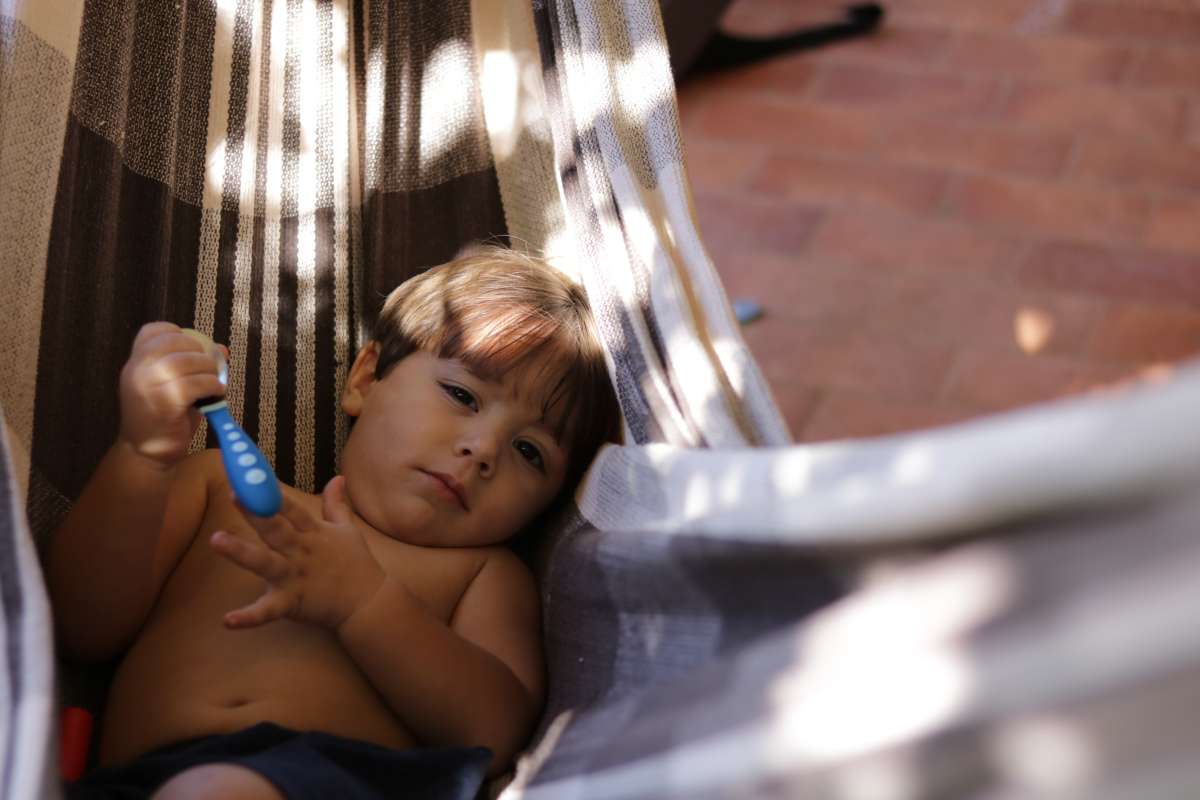
There is currently no baby product that has been cleared or approved by the FDA to prevent or lessen the risk of sudden infant death syndrome. To the Agency's knowledge, no medical device has been shown to prevent or lessen the risk of sudden infant death syndrome. Infants should not use goods that make such promises because they may present a suffocation risk.
Therefore, the organisation strongly advises against buying or using any baby items that promise to prevent or lessen the risk of sudden infant death syndrome. Report to the FDA any product with the claim that it can prevent or lessen the risk of SIDS (sudden infant death syndrome).
You should also know that anything with the word "sleeper" in the name is not safe for use while you're trying to get some shut eye. Babies should only sleep in products that are specifically designed for them, such as a bassinet, crib, or pack n play.
The difference between ASSB and SIDS (sudden infant death syndrome) needs to be made (Accidental Strangulation and Suffocation in Bed). An autopsy and comprehensive analysis of the sleeping environment are required to classify a death as ASSB when the cause of sudden infant death syndrome is unknown (a diagnosis of exclusion).
Some people mistakenly believe that choking, apnea, or suffocation are the causes of sudden infant death syndrome. Deaths from accidental suffocation or strangulation in bed fall into this category.
Hazards To Consider
The most dangerous aspect of using a baby hammock is doing so after the infant is nine months old or after they have learnt to crawl or roll over.
However, if the child were to spin out of it, they would likely have life-threatening injuries. Furthermore, asphyxia becomes a concern once the newborn is able to wriggle.
The baby can spin back after rolling over onto their face. If a parent or carer isn't paying close enough attention, their child could suffocate if their face is buried in the hot hammock cloth.
Worse yet, the risks aren't over yet. Aside from that, the baby could shift to one side and stuff its face in the blanket.
Death can occur in as little as two minutes in such situations. Children sleeping in hammocks are likewise at risk of asphyxia, but from a less immediate source of danger. If the mattress is curved upward because of movement, this will occur. As the infant's head is compressed against the chest, it becomes difficult for them to cry or breathe.
In addition, infants of only a few months old lack the skeletal strength to lift their heads. If an adult doesn't intervene to keep their neck from falling into an abnormal position, it will remain in that position.
Therefore, it is vital for the child's safety and well-being to keep an eye on them while they are in the hammock and to discontinue use if such an event occurs.
FAQs About Hammocks
When correctly used, the hammock sleep position did not compromise the upper airway of sleeping infants. The significance of shorter sleep duration in hammocks is still being determined. These findings should not be applied to all baby hammocks or older babies, particularly once the infant can roll.
Therefore, the usual recommendation is to stop using the hammock when the child is two years old. Of course, there may be exceptions if the child has yet to reach 15 kg (33 lbs) at that time. If your child is comfortable lying in the hammock, you may continue using it for some time after their second birthday.
Babies can generally sleep in the Amby baby hammock from birth to about 12 months. After that, many babies sleep in it for much longer. Ideally, it's best to use the hammock from birth. Many mothers in Australia take the hammock to the hospital with them.
The scariest part is that the ailments that are the easiest to sustain in a hammock while pregnant are ones that you probably wouldn't even realise until AFTER you gave delivery. These injuries include abdominal separation, joint damage, or spinal ligament stretching (leading to spinal instability and disc injury).
According to recent studies, switching to a hammock from a traditional bed can serve you better in the long run. The researchers concluded that due to the swinging motion of the hammock, it is possible to fall asleep more quickly and have a more restful sleep.
Conclusion
Since no infant sleep hammock has undergone rigorous, peer-reviewed testing, the Consumer Product Safety Commission has not supported their usage. Hammocks are unsafe for infants since they are not flat and robust and can cause them to sleep in unsafe positions. All babies should sleep in their cribs or a portable, safety-approved cot or bassinet. While sleeping on their backs, infants have a considerably lower risk of suffocation from objects or their gas, which helps reduce the number of cases of SIDS and other sleep-related deaths. After a five-week-old baby was discovered dead in a "Crib Cuddle," the Consumer Product Safety Commission announced a product recall.
There are reliable sources for products created from untreated calico that you can trust to deliver safe goods. Crib hammocks are free from mandatory safety regulations since they are classified as an "infant inclination sleep product." The only safe place for a baby to sleep is in a bassinet or pack 'n play, neither of which are suitable for older children. Any products claiming to reduce or eliminate the possibility of sudden infant death syndrome should be reported to the FDA. When the cause of death is unknown, assault and sudden infant death syndrome (SIDS) are considered medical deaths. Putting a baby in a hammock after they have learned to crawl or roll over or after they have reached the age of nine months is extremely risky.
Content Summary
- A baby sleep hammock is one example of a more modern product in this category.
- The Consumer Product Safety Commission has not endorsed infant sleep hammocks since none have been subjected to rigorous, peer-reviewed testing.
- Contrary to popular belief, there is no proof that they pose any more safety risks than a standard, firm crib mattress.
- For all naps and overnight sleep, the AAP suggests a flat, firm mattress for infants.
- A baby should not sleep in a hammock because, like adult-sized hammocks, they are not flat and sturdy, which can put the baby in dangerous positions while sleeping.
- Above, the AAP has issued recommendations for safe infant sleep.
- However, a recent AAP study revealed that co-sleeping with parents is associated with an increased risk of infant death.
- Every parent faces the question of where their newborn will sleep upon bringing their child home.
- A baby hammock is an alternative to traditional crib mattresses that you could consider.
- Babies can sleep in a crescent womb right after birth, and when they're ready to sit up on their own, try crawling, or turn over on their own, they can go on to a crib or toddler bed.
- You can trust that the wool futon mattress inside will provide your baby with the support and comfort they need for a restful night's sleep.
- At this juncture, a hammock designed for a baby is not the same as a hammock designed for an adult.
- Therefore, you shouldn't put your infant to sleep in anything made from netting or string.
- The risks of using a hammock for a child are not new.
- The Consumer Product Safety Commission issued a recall for the "Crib Cuddle" after a five-week-old infant was found strangled in one.
- Hammocks pose a fall hazard for infants and young children because of their elevated position.
- There are no entry barriers for the seller or buyer in the online marketplace.
- Crib hammocks are considered an "infant-inclined sleep product," which means they are exempt from obligatory safety standards.
- However, if you like the thought of your infant gently rocking in a hammock, there is an ideal time to do so: when you are there to supervise.
- Currently, no baby product has been cleared or approved by the FDA to prevent or lessen the risk of sudden infant death syndrome.
- Therefore, the organisation strongly advises against buying or using baby items that promise to prevent or lessen the risk of sudden infant death syndrome.
- Please report to the FDA any product with the claim that it can prevent or lessen the risk of SIDS (Sudden Infant Death Syndrome).
- An autopsy and comprehensive analysis of the sleeping environment are required to classify a death as ASSB when the cause of sudden infant death syndrome is unknown (a diagnosis of exclusion).
- Some people mistakenly believe that choking, apnea, or suffocation are the causes of sudden infant death syndrome.
- Deaths from accidental suffocation or strangulation in bed fall into this category.
- The most dangerous aspect of using a baby hammock is doing so after the infant is nine months old or after learning to crawl or rollover.
- However, if the child were to spin out of it, they would likely have life-threatening injuries.
- Worse yet, the risks aren't over yet.
- Children sleeping in hammocks are likewise at risk of asphyxia but from a less immediate source of danger.
- Therefore, it is vital for the child's safety and well-being to keep an eye on them while in the hammock and to discontinue use if such an event occurs.
